Title Spektrofotometrijske metode i metode spektrometrije masa u određivanju razlika između dva proizvodna procesa vina Title (english) Spectrophotometric and mass spectrometry based methods for determination of the differences between the two wine production processes Author Eva Ožbolt Mentor Christian Andrew Reynolds (mentor)Mentor Lara Saftić Martinović (komentor)Committee member Marta Žuvić (predsjednik povjerenstva)Committee member Dean Marković (član povjerenstva)Committee member Christian Andrew Reynolds (član povjerenstva)Committee member Lara Saftić Martinović (član povjerenstva)Granter University of Rijeka Defense date and country 2022-07-20, Croatia Scientific / art field, BIOTECHNICAL SCIENCES Abstract Vino je alkoholno piće u čijem se kemijskom sastavu ističu fenolni spojevi sa
svojim organoleptičkim, antioksidativnim i protuupalnim svojstvima.
Tehnološki proces proizvodnje vina uvelike utječe na sastav fenolnih
komponenti istih, stoga su inovativne tehnologije od velike važnosti pri
isticanju proizvoda na konkurentnom tržištu. Dozrijevanje vina u morskim
vruljama tehnološki je proces proizvodnje vina kojim se, uz atraktivan izgled
butelje, potencijalno postiže promjena kemijskog sastava istih. Butelje vina
odležane u vruljama nerijetko dosežu visoke cijene na tržištu, stoga je cilj
ovoga rada ispitati postoji li razlika u antioksidativnom potencijalu i
kvalitativnom i kvantitativnom sastavu fenolnih komponenti između uzoraka
vina odležanih u vrulji i podrumu. Spektrofotometrijskim metodama i
metodama spektrometrije masa analizirano je i uspoređeno trideset uzoraka
bijelih vina sorte Malvazija, od kojih je petnaest uzoraka dozrijevano u
podrumu i petnaest uzoraka u morskoj vrulji u periodu od godinu dana.
Provedene spektrofotometrijske metode bile su metode redukcije kationskih
radikala za mjerenje antioksidativnog potencijala, Folin-Ciocalteu metoda za
određivanje ukupnih fenola i metoda određivanja ukupnih flavonoida, dok su
metode spektrometrije masa činile LC-QQQ metoda (s provedenom LCMS/MS kvalitativnom analizom i MS scan analizom) i MALDI-TOF fingerprint
analiza. Rezultati provedenih analiza uspoređeni su statističkim testovima s
ciljem ispitivanja značajnosti razlika podataka. Spektrofotometrijskim
metodama pokazalo se kako se antioksidativni potencijal i razina ukupnih
fenola i flavonoida značajno ne razlikuju između dviju ispitanih skupina.
Nadalje, rezultati dobiveni LC-MS/MS analizom pokazali su da se vina
dozrijevana u vrulji i podrumu značajno razlikuju po razini šest flavonoidnih
spojeva, no ukupan se zbroj fenolnih spojeva značajno ne razlikuje između
dviju ispitanih skupina. Međutim, razlika je postojana te je kao takva
poticajna za buduće analize uzoraka i optimizaciju tehnike dozrijevanja vina
u morskoj vrulji. Ovaj diplomski rad prvi je koji opisuje proces dozrijevanja
vina u morskoj vrulji te analizira i uspoređuje uzorke vina iz vrulje i podruma.
Abstract (english) Wine is a popular alcoholic beverage and phenolic compounds stand out
among the various chemical compounds in wine with organoleptic,
antioxidant and anti-inflammatory properties. The technological process of
wine production affects the composition of their phenolic components, so
innovative technologies that can influence the phenolic compounds in wine
are of great importance in this competitive market. The maturation of wine
in sea springs is a novel technological process that, in addition to adding an
attractive appearance to the wine bottle, potentially influences the wine’s final
chemical composition. Furthermore, bottles of wine aged in sea springs often
reach higher market prices. Therefore, the aim of this thesis is to determine
the antioxidant potential and phenolic composition of wine samples aged
either in sea springs or traditional cellars. Thirty samples of Malvasia white
wines were analyzed using spectrophotometric and mass spectrometry
methods, of which fifteen samples were matured in traditional cellars and
fifteen samples were matured in a Northern Adriatic sea spring. All wines
were aged for over one year prior to analysis. Spectrophotometric analysis of
antioxidant potential and total phenols and flavonoids in the wine samples
was performed using the cation radical reduction and Folin-Ciocalteu
methods, respectively. Using a LC-QQQ mass spectrometry method, phenols
in the wine were analyzed by quantitative LC-MS/MS analysis, qualitative MS
scan analysis and MALDI-TOF fingerprint. The results were analyzed with
statistical tests to determine significance differences between the two
maturation processes. The antioxidant potential and total phenol and
flavonoid levels did not differ significantly between the two maturation
processes. However, LC-MS/MS analysis showed that wines matured in the
sea spring differ significantly from cellar-matured wines in the concentration
of six flavonoid compounds, but the total sum of phenolic compounds did not
differ significantly between the two groups. This is encouraging for future
optimization of wine maturation techniques in sea springs. This thesis is the
first to describe the process of wine maturation in a sea spring and to analyze
and compare wine samples matured in sea springs and cellars.
Keywords
Malvazija
fenoli
vrulja
antioksidativni potencijal
LC-QQQ
MALDI-TOF
Keywords (english)
Malvasia
phenols
sea spring
antioxidant potential
LC-QQQ
MALDI-TOF
Language croatian URN:NBN urn:nbn:hr:193:367162 Study programme Title: Biotechnology in medicine Type of resource Text File origin Born digital Access conditions Open access Terms of use Repository Repository of the University of Rijeka, Faculty of Biotechnology and Drug Development Created on 2022-10-24 12:40:02

